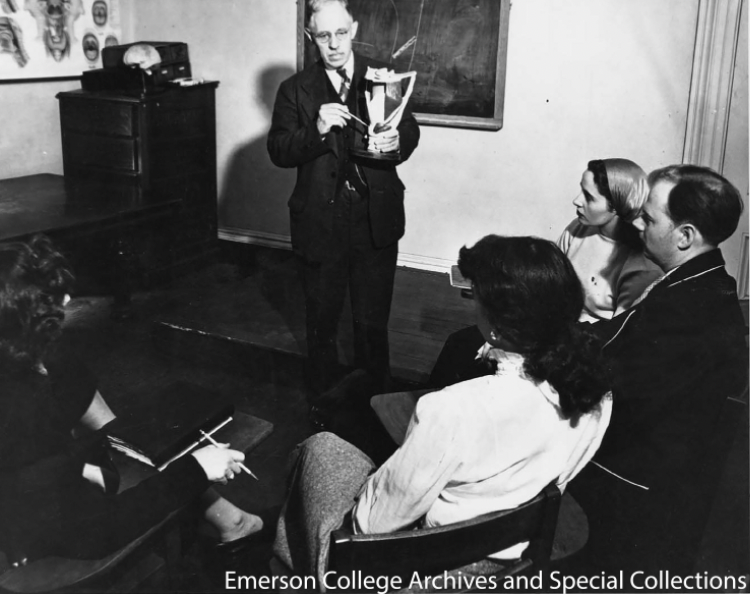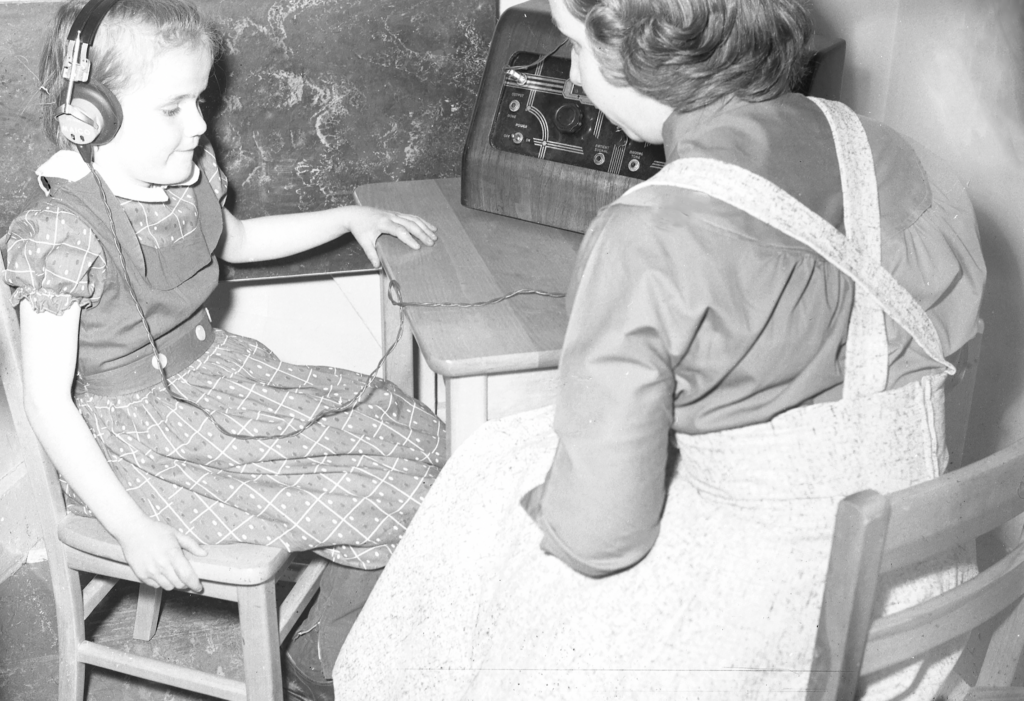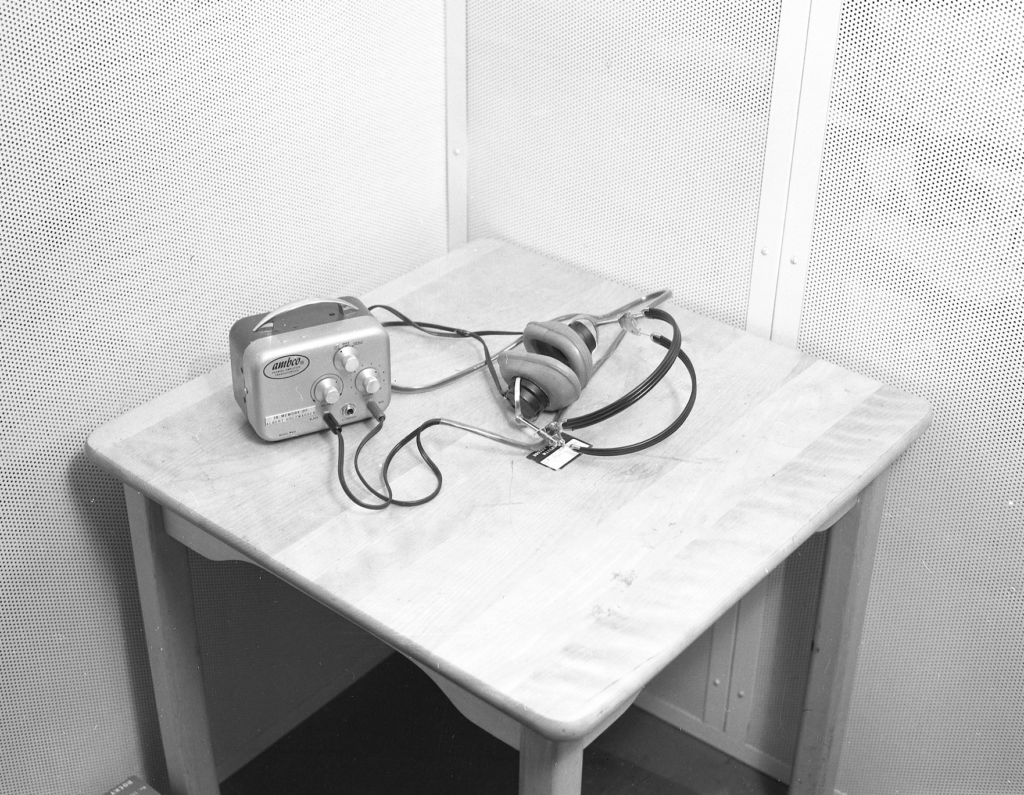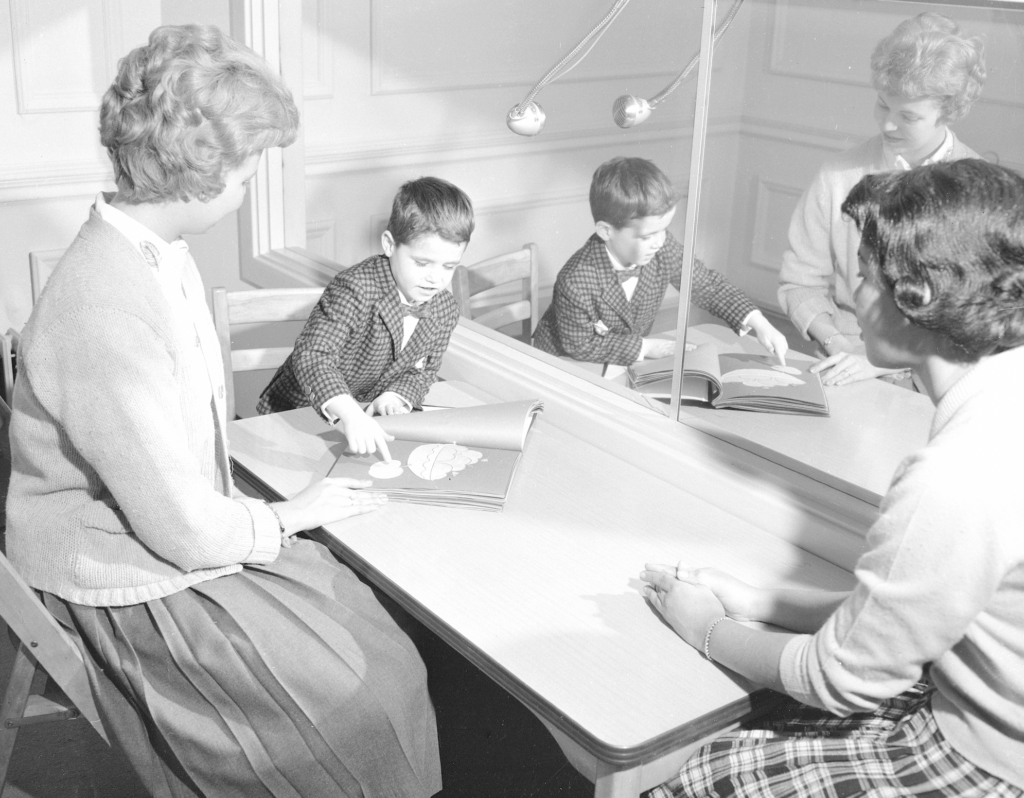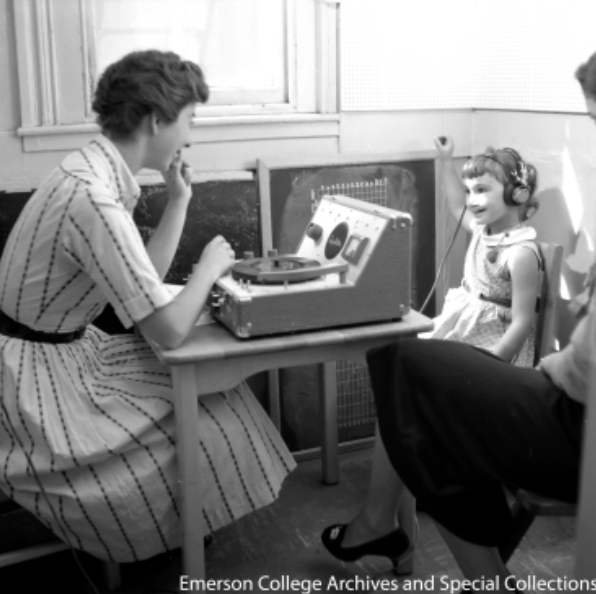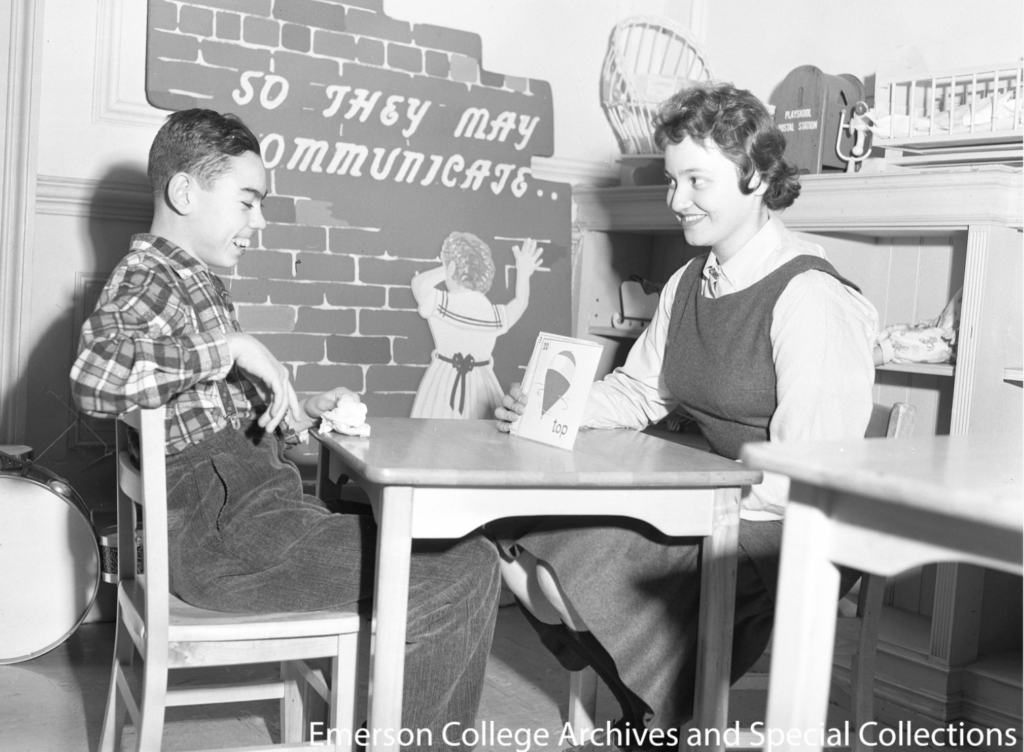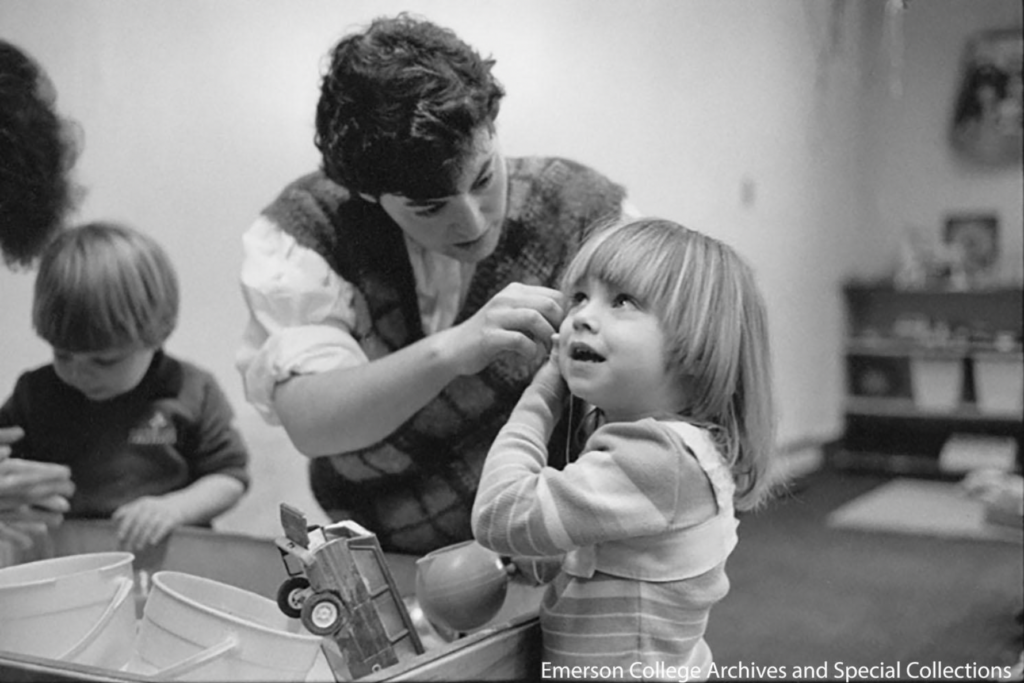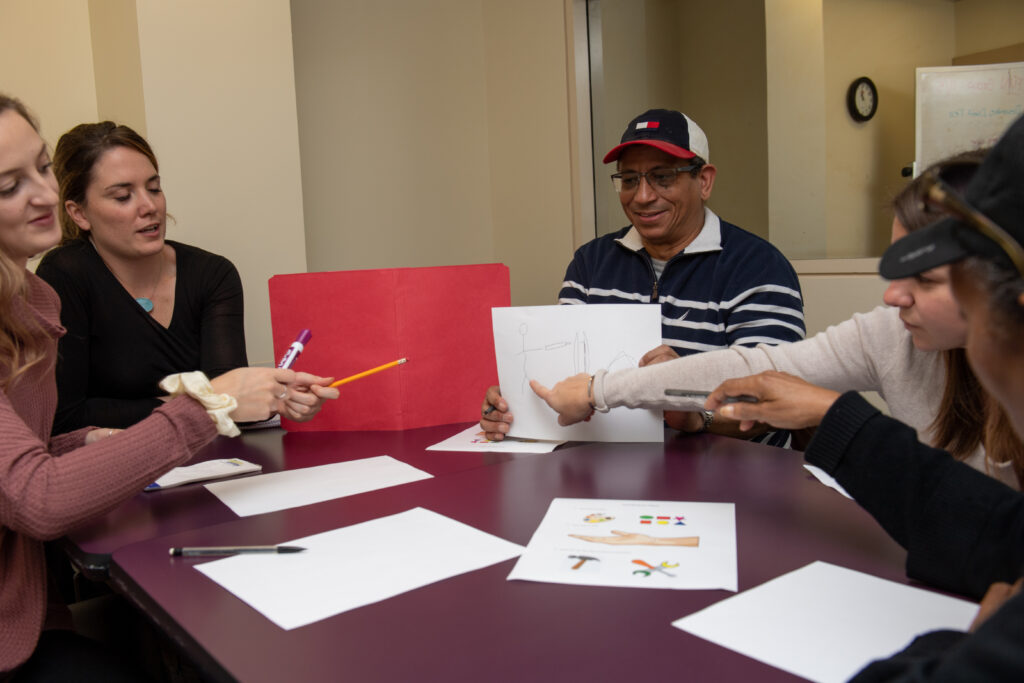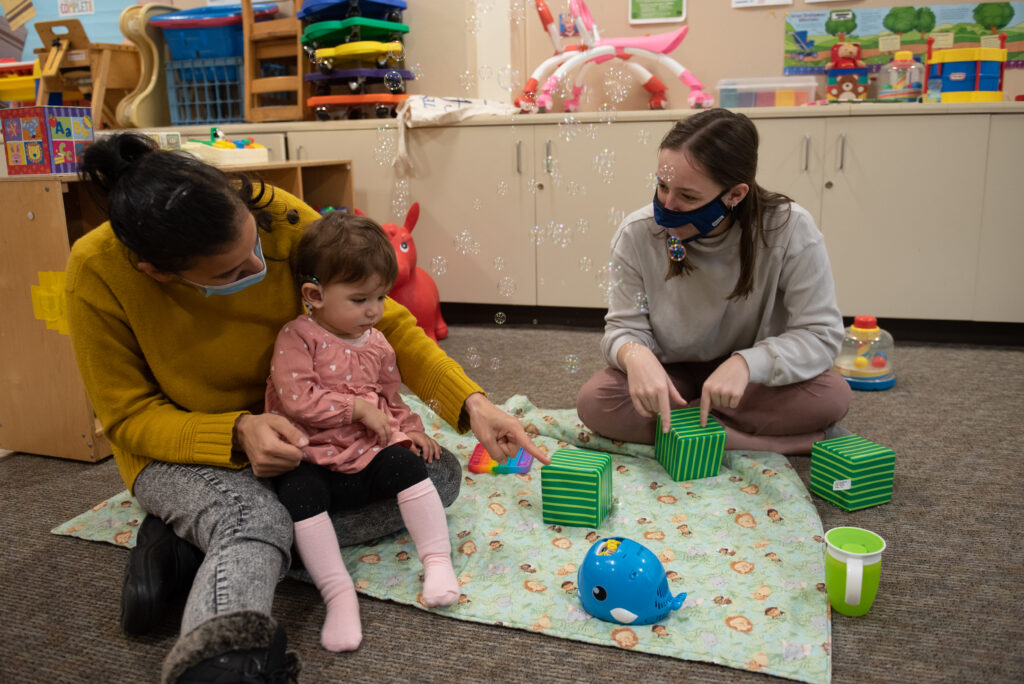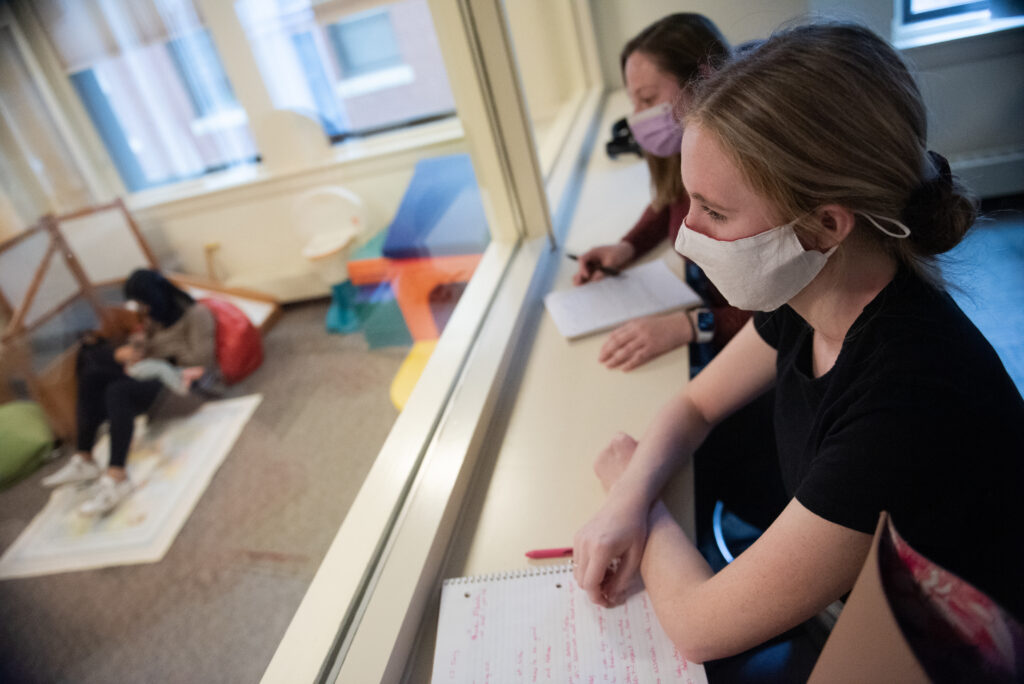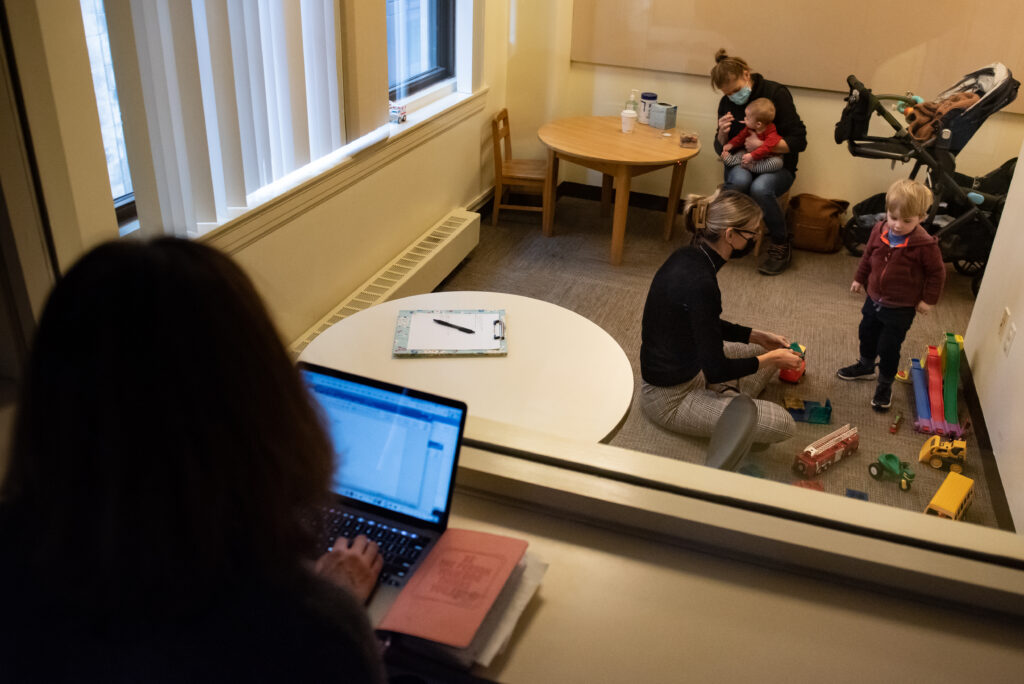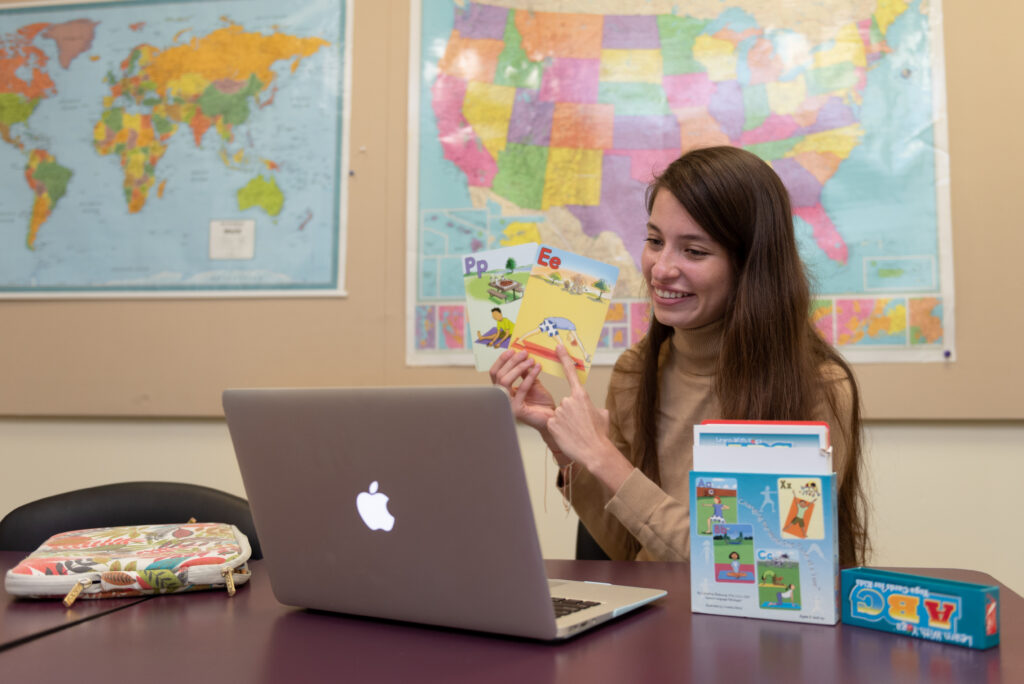Over 70 Years, Community’s Needs Shaped Robbins Center
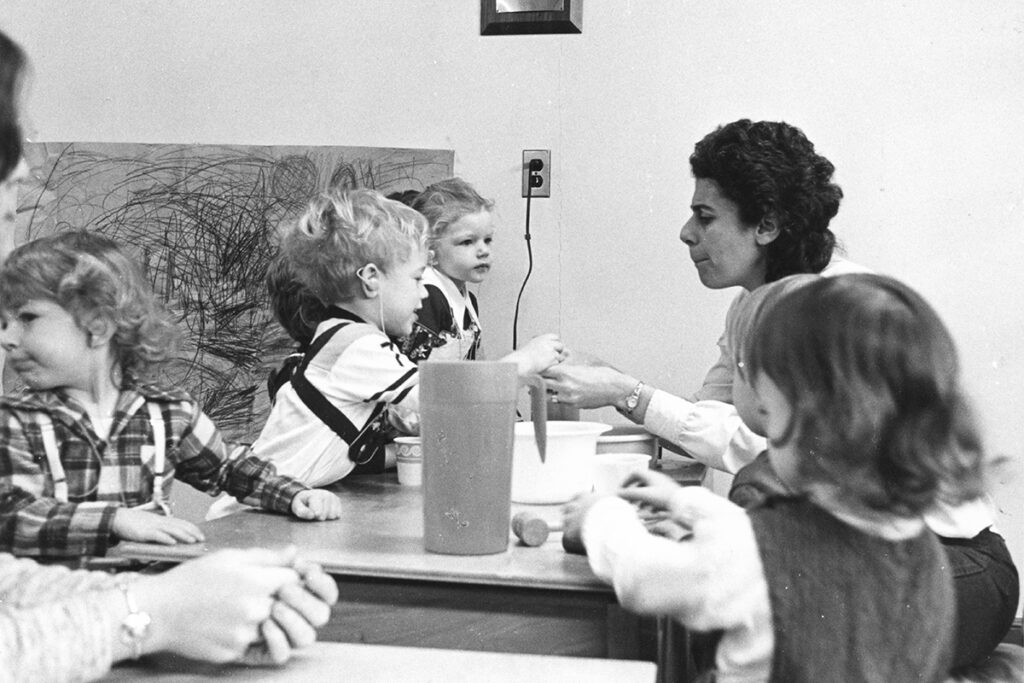
Kindergarten through second grade was difficult for 8-year-old Liam. But things are different in third grade.
Earlier this year, Liam began receiving language therapy services at the Robbins Center for an auditory processing disorder. As the Center is the primary clinical training facility associated with Emerson’s Department of Communication Sciences and Disorders (CSD), Liam works with graduate students and licensed clinicians.
“This school year has been off to a phenomenal start,” said Liam’s mother, Kristel Howell, MSSp’05, who trained to become a speech language pathologist (SLP) at the Robbins Center. “It speaks volumes to him getting the help he needs. Therapy boosts his confidence in the classroom and that contributes to improvements that his teacher has noted.”
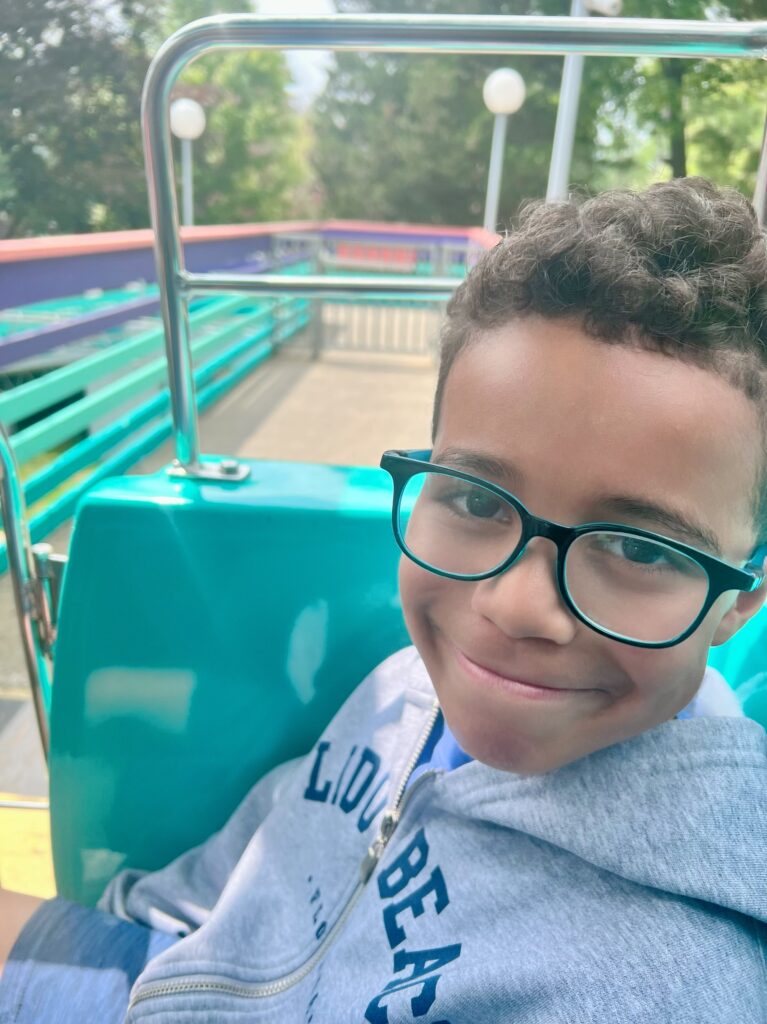
Liam is just one of thousands of people that the Robbins Center has helped overcome a variety of communication disorders, and his mother is part of a long legacy of SLPs who have launched their careers in the field since its founding 70 years ago.
“I’ve always had a relationship with [CSD], and to that end, I’m very much familiar with the wealth of experience, the varied backgrounds, and just the general fervor for treating language and speech disorders,” said Howell, who oversees Emerson graduate students in her role as a speech language pathologist at Lemuel Shattuck Hospital in Jamaica Plain . “I come from them. I know what they’re capable of, and I’ve maintained a relationship with them for the last 20 years.”
The Namesake
The center is named after Professor Emeritus Samuel D. Robbins, a founding father of modern speech language pathology and co-founder and former president of the American Speech and Hearing Association (ASHA).
Former faculty member and first director Catherine Perry, Class of 1920, was the principal Emersonian behind creating the Robbins Speech and Hearing Clinic, as it was originally called. Originally, the clinic was housed on two floors of 145 Beacon Street before moving to 168 Beacon Street, then, in 1998, to its current location at 216 Tremont Street.
Photos from Emerson College Archives and Special Collections
In A Century of Eloquence: The History of Emerson College by Professor Emeritus John Coffee and Richard L. Wentworth ’79, Perry described the Clinic several weeks after its opening.
“Our youngest patient is a little girl three years old, and our oldest is a man of middle age,” said Perry. “The variation in age is hardly greater than shown in the speech defects to be corrected. These include cerebral palsy, delayed speech, sound substitution, poor articulation and voice quality, foreign accent, stuttering, and aphasia.”
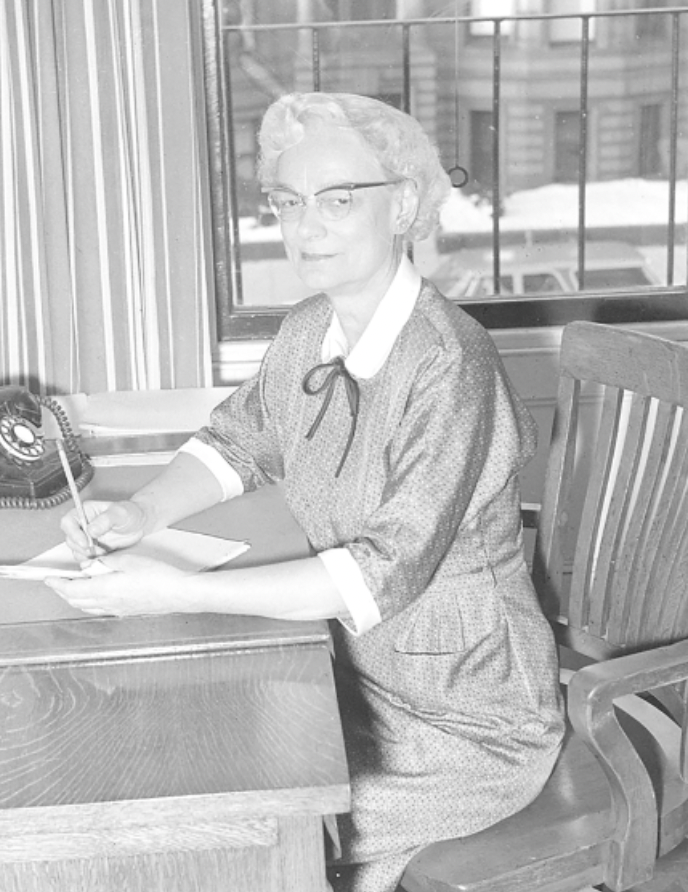
By 1958, the Clinic was staffed by three speech pathologists, an audiologist, a psychologist, a pediatrician, and graduate assistants, in addition to consulting specialists brought in when needed. The 60 clinicians who were training at the College in 1958 were required to clock 200 hours of clinical experience.
Today, the staff primarily consists of SLPs and two developmental educators, and clinicians-in-training need to complete 375 clinical hours. First-year CSD graduate students must start at the Robbins Center before they move to external internships at nursing homes, hospitals, clinics, and schools.
Since its inception, the Robbins Center has been flexible, creating and sunsetting programs based upon need and partnerships. Current programs include the Thayer Lindsley Family-Centered Program founded by Dr. David Luterman in 1965; Center for Acquired Communication Disorders (est. 1997); Group Language Therapy Program (est. 1975); and Parkinson Voice Project (2021). The Gender Affirming Voice and Communication Program (GAVC) began in 2015, is their most popular program, and has a long waitlist, receiving almost daily referrals.
“On top of our mind is continuing to be adaptable to community needs, advancing technology, and shifting in response to the priorities of our field,” said Lynn Conners MSSp ’97, director of clinical programs for the Robbins Center. “We’ve been learning more and more about culturally responsive care and really looking at issues of social justice, looking at systemic racism and our medical model ableist practices, and looking at where we can be change-makers.”
Technology continues to move programs forward. The pandemic created an opportunity for speech pathologists to see into a client’s real-life environment, and remote sessions are now commonplace. The Robbins Center uses an electronic medical record system (no more old school manila folders), and client sessions are recorded and saved in the cloud for students and clinical instructors to review.
Helping Young and Old
Some clients come in for one-off evaluations to receive recommendations to outside programs. Other clients come for a semester or two, and some have longstanding, even lifetime, relationships.
“There are a number of adult clients who have aphasia and have been working with the Robbins Center for many years in the life participating model of therapy,” said Conners. “They have self-identified goals to continue to improve their communication.”
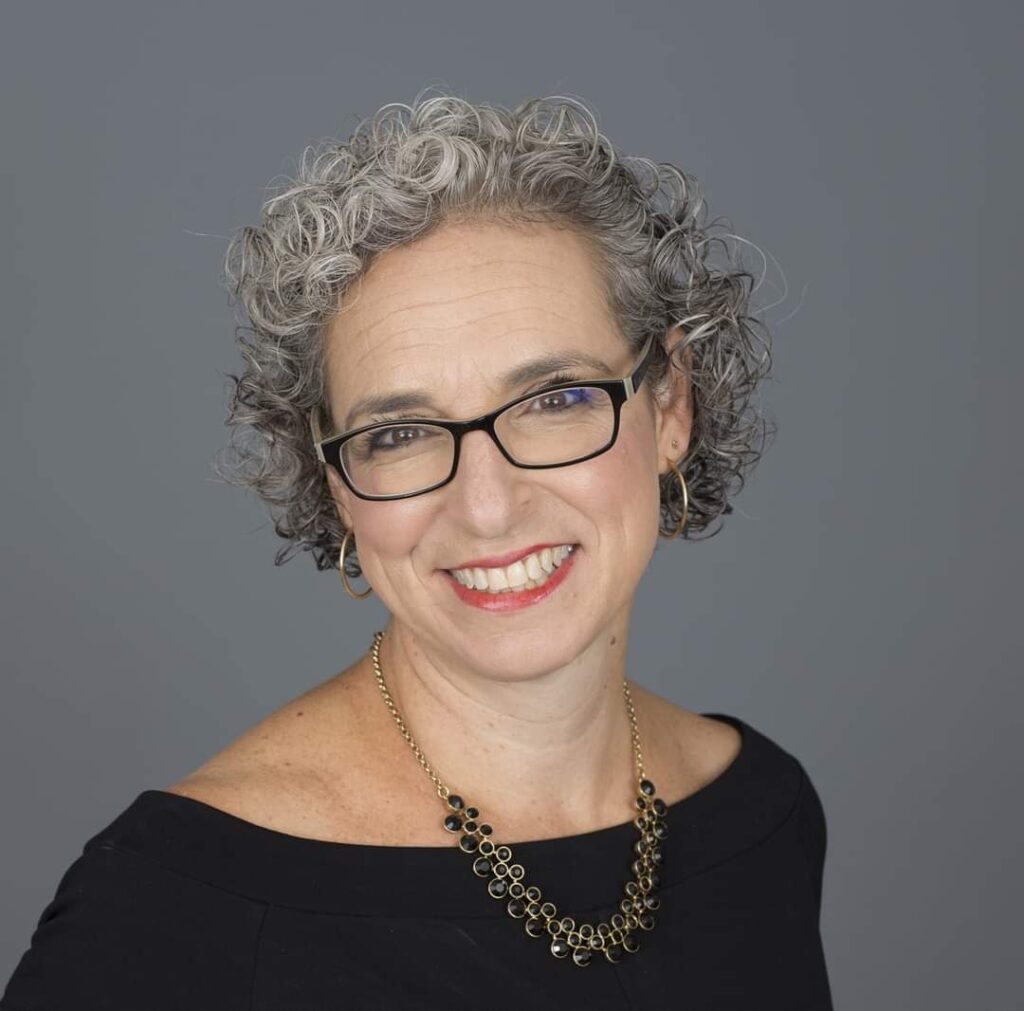
Robbins offers individual and group therapy, the latter of which is unusual for speech pathology programs. There are support groups for clients with aphasia, also uncommon among schools with speech language pathology departments.
A recent offering for adult clients with aphasia [a loss of ability to understand or express speech] was a community sailing accessibility program on the Charles River with the nonprofit Community Boating. Clients worked to build new skills, new vocabulary, and interacted with community members in a fully accessible, supportive environment, all while learning to sail.
“One of our grad students did their thesis on the measurable process in language and vocab for folks who’ve had aphasia for many years by participating in this language-focused community sailing group,” said Conners.
The Thayer Lindsley program offers a support group for parents whose children are receiving services, a unique resource, said Barb Worth, CSD clinical and academic instructor, and course builder, convener, and facilitator for Speech@Emerson, the College’s online master’s program in speech pathology.
“For a lot of the children and their parents, it’s been really invaluable,” said clinical instructor Jocelyne Leger, MSSp ’97. “We empower the parents by teaching them how to support their child’s speech and language development within their daily routines, thus helping the child become a better communicator.”
“
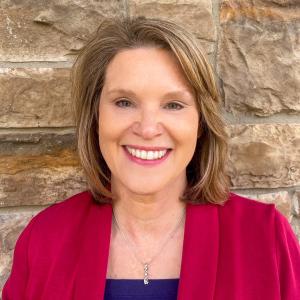
When it comes down to it, the Robbins Center’s focus is to help anyone in need of services.
For clients who’ve maxed out their insurance, it’s an opportunity for lower-cost services, said Worth. No client is turned away for need.
“It’s a win-win situation. The client knows that services are being provided by a graduate student who is in training,” she said. “Many of our clients appreciate the fact that they are contributing to the development of our students.”
The Future of the Field
At the beginning of each fall, spring, and summer semester, graduate students are assigned to clients.
Emerson encourages students to be SLP generalists by initially exposing them to multiple diagnoses. Students have opportunities to work with patient populations who they may not otherwise encounter, such as those with aphasia and cognitive communication disorders, or people needing gender-affirming therapy or early intervention.
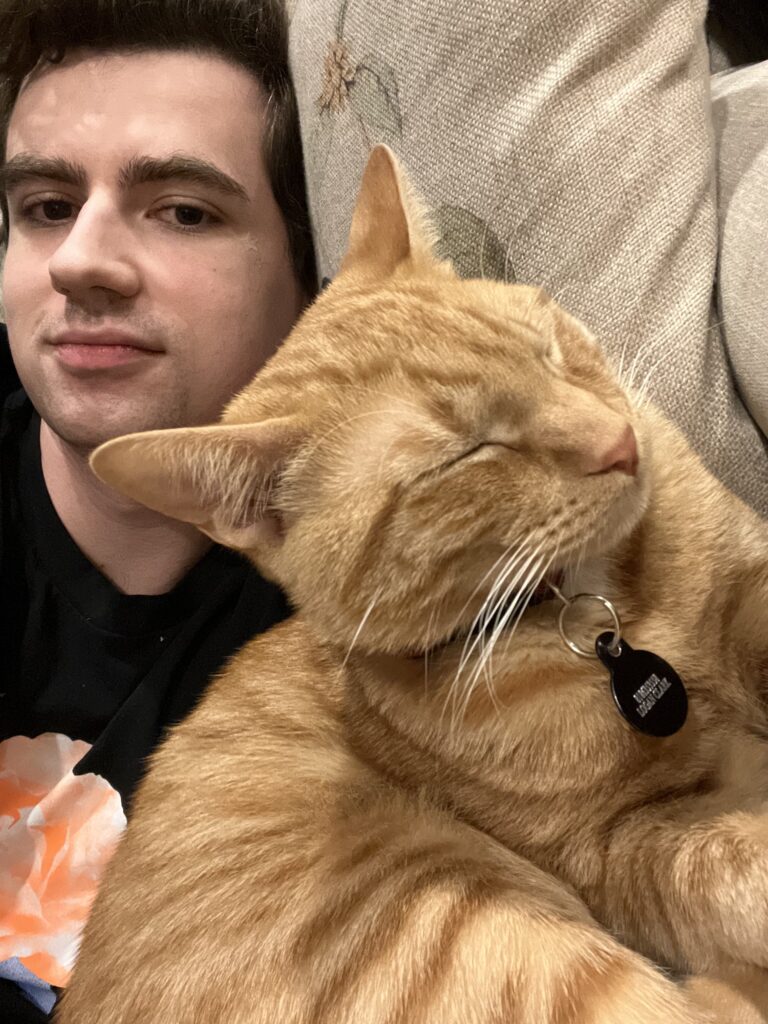
CSD graduate student Logan Clark ’22 sees one or two clients or groups per semester.
“The Robbins Center is a massive asset to my education here at Emerson,” said Clark. “It provides a supportive environment for our first semester forays into clinical practice, when we often feel nervous and uncertain of our abilities as clinicians.”
After that initial semester, students work with populations based on their interests and external placements. This fall, Clark is working at Mass Eye & Ear’s Voice and Speech Lab, treating voice and upper airway disorders, as well as providing gender-affirming voice therapy.
“The Robbins Center is the epicenter of the department’s clinical education activities. It services both Emerson’s internal and external communities and has been trailblazing the field of [speech language pathology] for the past 70 years,” said Nydia Bou, chair of Communication Sciences and Disorders. “The importance of Robbins can only be measured by the positive impact on students and clients for the past seven decades.”
Photos by Derek Palmer
Coming Full Circle
CSD graduate student Triona Murray received speech therapy for a stutter from ages 5 to 11, but stopped due to fatigue and frustration. By the time she entered high school, she felt she desperately needed to work on both her speech and confidence. During a three-week intensive fluency program at the Robbins Center in 2014, her stutter transformed from severe to very mild with the help of the supervising clinical instructor and student clinicians.
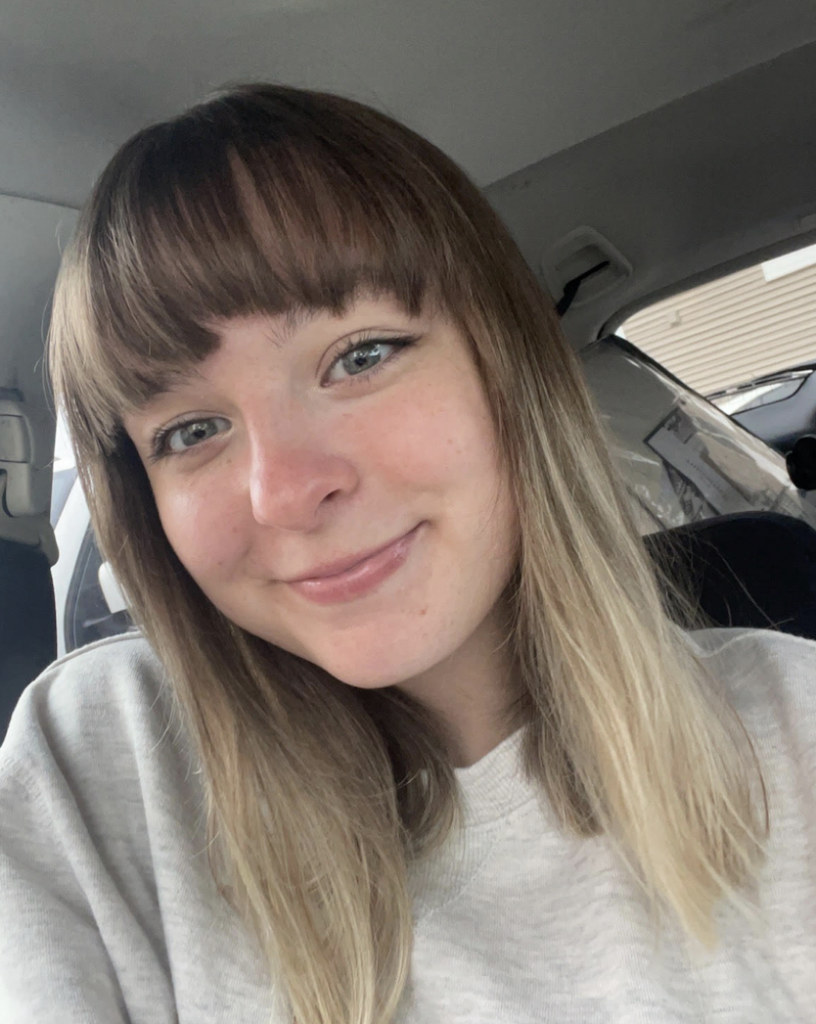
After the program, she attended meetings at the Robbins Center with adults and adolescents who had also participated in the intensive fluency program. Together they worked on skills learned at the program and enjoyed the space created for people who can relate to one another.
“It allowed me to lean into the identity of being a person who stutters, and hearing other teens and adults successfully live through the same struggle as me was comforting and inspiring,” said Murray. “It was at that intensive program where I decided I wanted to be a speech-language pathologist and attend Emerson.”
Nine years later, Murray considers herself lucky for the opportunity to be part of the same fluency intensive again – this time, not as a client, but as a student clinician helping people just like her.
“The Robbins Center has been such a symbolic community for me both as a person who stutters and as a budding speech-language pathologist,” said Murray. “It is the place where I found confidence in myself as a speaker, and now as my confidence as a clinician.”
Categories
